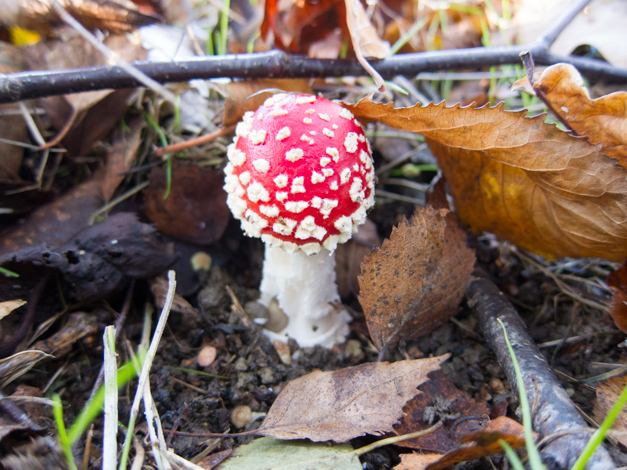And the only other fungus I can recognise without any ID keys – fly agaric, amanita muscaria. This is a young one that I unearthed (almost literally). It does actually attract (and kill) flies and has been used as an insecticide. Although poisonous, it used to be seen as a symbol of good luck and used to feature on Victorian Christmas cards. It can be found from summer through to November and, as it gets older, the cap gets flatter and more disc like. After a lot of rain, even the young caps can lose their white scales and become plain red so it is a good job I found this on Saturday, before the rains came.
Tag: mushroom
White toadstools popping up near you this autumn
I’m not very good at recognising different types of mushrooms and toadstools. I’ve been on an organised fungi foray over at Gamlingay Woods, I’ve taken pictures and put them on iSpot, but I can rarely remember what they are called or remember having seen them before. In fact I can count on two fingers the ones I can recognise and name immediately on sight. This, is one of them.
This is a shaggy ink cap (Coprinus comatus) – comatus means hairy and refers to the scales that are clear once the cap has pushed out of the ground. They pop up all over the place and are widespread across Europe and North America. In fact, if you are an urban naturalist then you are in luck because they are often found in the green spaces in towns.
They first form as little egg-shaped white caps peeping out of the soil, and, as they grow the gills turn from white to pink to black as they liquefy themselves to death from the edges forming an inky like substance as they spread their spores. In the end there is just a white stem with some inky remains at the top.
They are supposedly edible, although not that tasty and not poisonous, but have to be eaten pretty quickly as they will have liquified themselves within a couple of hours of picking. However, as with all mushrooms you need to really know your stuff to prevent accidentally picking something poisonous.

